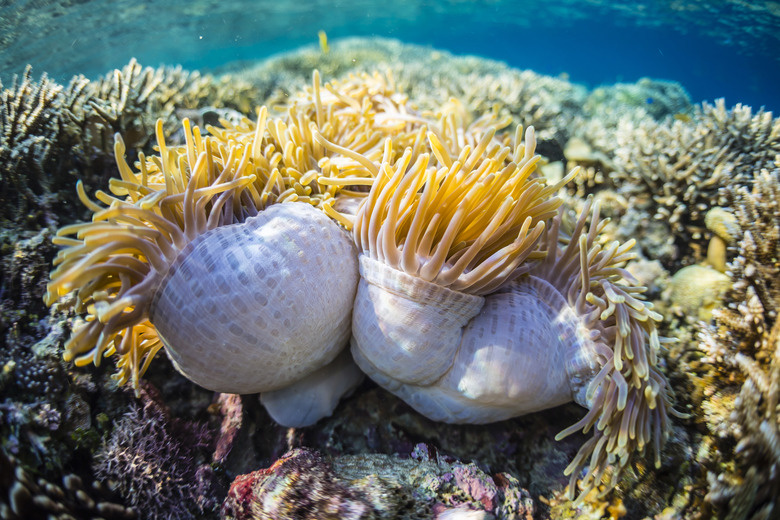What Animals Are In The Intertidal Zone?
Intertidal zones, otherwise known as littoral zones, are the areas where the ocean meets the land. The ever-changing tides make this area a harsh environment to live in.
During low tide, organisms must be able to withstand dry conditions and the heat of the sun. During high tide, flora and fauna must be adapted to live in salty water and survive the crashing waves.
Interesting Intertidal Zone Facts
Interesting Intertidal Zone Facts
The intertidal zone is composed of four sections: low, middle, high and the spray zone.
The low zone gets exposed only during the most extreme low tides while, as the name suggests, the spray zone is mostly a dry environment and is hit by the splashes of waves and submerged only during very high tides or storms. At low tide, you can identify each of the zones based on the bands of different biological communities.
Intertidal zones range in size depending on the geographical location and the location of the moon. Because of the moon's relationship with the ocean tides, tide heights are smaller closer to the equator, resulting in smaller intertidal zones. The Bay of Fundy in Canada has the most substantial low-to-high tide difference in the world, measuring 65 feet (20 meters).
Types of Intertidal Zone Animals
Types of Intertidal Zone Animals
Despite being a harsh environment, numerous animals have managed to adapt. Intertidal zone animals and plants need a way to protect themselves from water loss during low tides.
Algae and seaweeds that are able to withstand the ever-changing conditions to make up most of the intertidal zone plants. Animals like octopuses, large fish and birds such as oystercatchers, cormorants, herons and gulls often visit intertidal zones to feed.
Anenomes
Anenomes
Anemones use their stinging tentacles to capture small crabs, fish and shrimp. They are capable of reproducing both sexually and asexually. Some anemones live in solitary while others aggregate in colonies. Colonies of anemones have been known to fight each other.
Many anemones like the green anemone, Anthopleura xanthogrammica, get their color from photosynthetic algae that live inside them, providing them with an additional source of food.
Barnacles
Barnacles
Barnacles are a stationary littoral-zone organism. After an aquatic juvenile stage, they glue themselves to rocks and remain there for the rest of their lives. Movable shell plates, called operculum (plural: opercula or operculums), open during filter feeding and mating, and then tightly close to protect the organisms from drying out and being eaten by predators.
Barnacles are famous for having the longest penis-to-body ratio in the animal kingdom. Their penis stretches up to eight times their body length so they can mate with their neighbors.
Mussels
Mussels
Intertidal zones often have different mussel species in different zones. Like barnacles, mussels are stationary as adults and filter-feed during high tides.
Mussels attach themselves to a solid substrate using their byssus threads. Closing their shells tightly and living in clustered groups helps them to reduce water loss during low tide.
Marine Snails
Marine Snails
Marine snails have a hard shell to protect them from the elements. Periwinkles and many marine snails are herbivorous and move across the rocks, grazing algae.
Welks or dogwinkles are predators that drill holes in the sides of barnacles and mussels with their radula.
Crabs
Crabs
Crabs have a hard outer carapace to prevent them from drying out. Crabs are typically omnivorous or carnivorous, feeding on a range of things including algae, barnacles, shellfish, shrimp, small fish and worms. Hermit crabs find empty shells to hide inside for extra protection.
Some crabs such as hermit crabs and decorator crabs adorn their carapaces and shells with pieces of algae, sponge, stones and other found objects for camouflage.
Sea Stars
Sea Stars
Sea stars, also commonly called starfish, are a significant predator in the intertidal zone. Sea stars use the tiny tubes on their legs to move across the ground and pry open shellfish.
The starfish then exudes a stomach-like sac out of their mouth to externally digest their meal before consuming it.
Fish
Fish
Small fish will often be washed into rock pools during high tide and must wait until the next tide to return to the ocean. Blenny, goby and triplefins are commonly found in rockpools and low tidal zones. Fish predate on other smaller animals and algae while in the rock pools.
References
- Windows to the Universe: Life in the Intertidal Zone
- Enchanted Learning: Intertidal Zone Animals
- National Ocean Service: Tides and Water Levels
- Biological Dictionary: Intertidal Zone Facts
- The NROC Project: Life in the Intertidal Zone
- British Marine Life Study Society: British Rock Pool Fish
- National Geographic: Poorly Endowed Barnacles Overthrow 150-Year-Old Belief
- Capital Regional District: What Is the Intertidal Zone?
- Olympic Coast National Marine Sanctuary: Intertidal Zones
Cite This Article
MLA
Jerrett, Adrianne. "What Animals Are In The Intertidal Zone?" sciencing.com, https://www.sciencing.com/animals-intertidal-zone-6802644/. 22 November 2019.
APA
Jerrett, Adrianne. (2019, November 22). What Animals Are In The Intertidal Zone?. sciencing.com. Retrieved from https://www.sciencing.com/animals-intertidal-zone-6802644/
Chicago
Jerrett, Adrianne. What Animals Are In The Intertidal Zone? last modified August 30, 2022. https://www.sciencing.com/animals-intertidal-zone-6802644/
